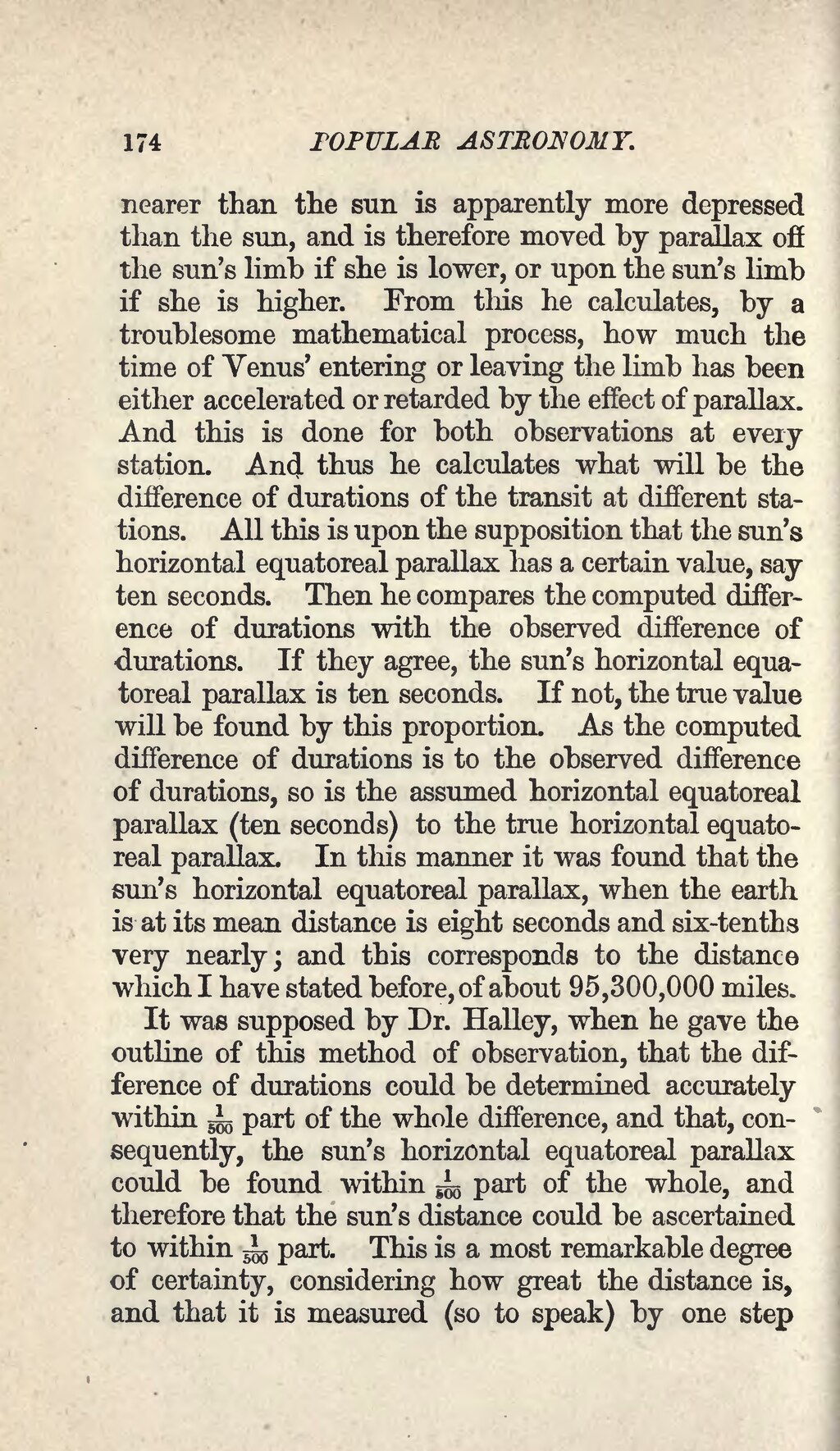nearer than the sun is apparently more depressed than the sun, and is therefore moved by parallax off the sun's limb if she is lower, or upon the sun's limb if she is higher. From this he calculates, by a troublesome mathematical process, how much the time of Venus' entering or leaving the limb has been either accelerated or retarded by the effect of parallax. And this is done for both observations at every station. And thus he calculates what will be the difference of durations of the transit at different stations. All this is upon the supposition that the sun's horizontal equatoreal parallax has a certain value, say ten seconds. Then he compares the computed difference of durations with the observed difference of durations. If they agree, the sun's horizontal equatoreal parallax is ten seconds. If not, the the value will be found by this proportion. As the computed difference of durations is to the observed difference of durations, so is the assumed horizontal equatoreal parallax (ten seconds) to the true horizontal equatoreal parallax. In this manner it was found that the sun's horizontal equatoreal parallax, when the earth is at its mean distance is eight seconds and six-tenths very nearly; and this corresponds to the distance which I have stated before, of about 95,300,000 miles.
It was supposed by Dr. Halley, when he gave the outline of this method of observation, that the difference of durations could be determined accurately within 1500 part of the whole difference, and that, consequently, the sun's horizontal equatoreal parallax could be found within 1500 part of the whole, and therefore that the sun's distance could be ascertained to within 1500 part. This is a most remarkable degree of certainty, considering how great the distance is, and that it is measured (so to speak) by one step
